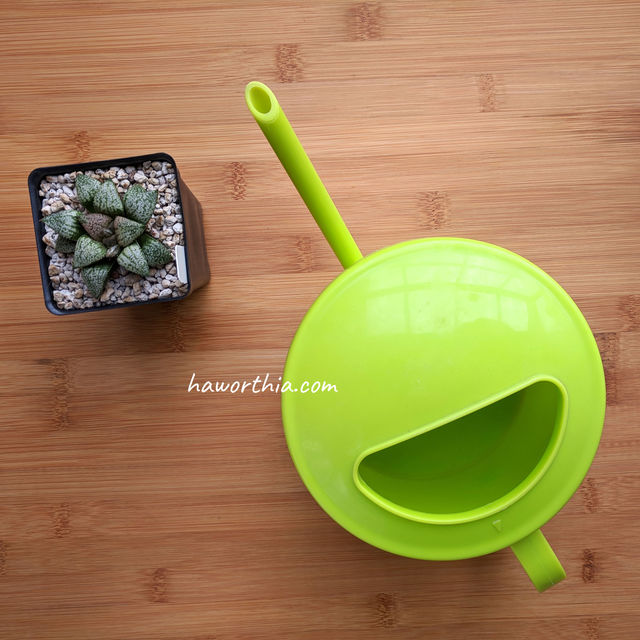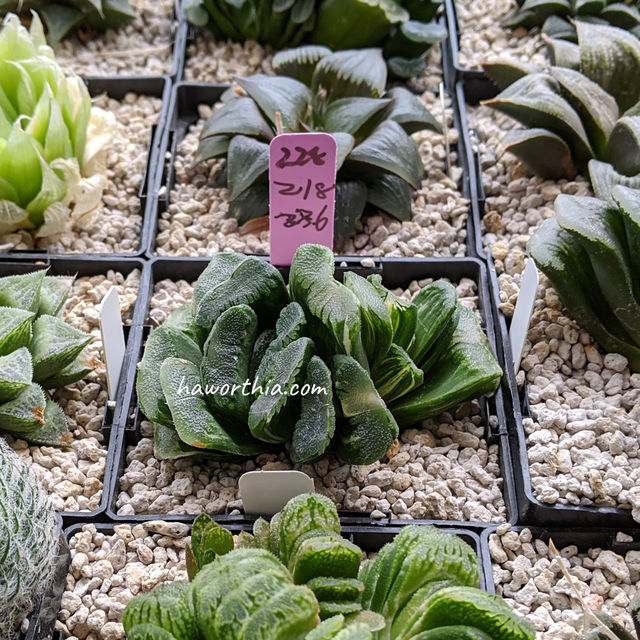Watering
Watering is the most difficult skill to master for growing Haworthias. Watering at a bad timing may damage or even kill a plant due to root rot. Weather conditions, especially temperatures, should be the main considerations to decide when to water and how much to supply.

In Mild Weather (Spring and Fall)
The growth speed of Haworthias is largely impacted by temperatures. In spring and fall, when actively growing in moderate temperatures, they can be watered immediately when the growing medium around the roots approaches dryness. In Northern California, I water every ~3 weeks. Just avoid watering plants when they are under direct sunlight, which can lead to high temperatures.
How to Measure the Humidity of Growing Medium
A precise yet simple way is to pick several plants for each container size, weigh them when the growing mediums are dry and record in labels. After watering, the remaining water in the growing medium can then be measured by the weight difference. Repeat this weighing process several times can further improve the accuracy.
When watering, thoroughly wet the growing medium and stop after 10~20% of the water applied exits the drain. This flushes any accumulated salts and metabolites away from the growing medium. Such accumulations can inhibit water and nutrient uptakes of plants. The bottom-up ‘soaking’ approach is not recommended because it is less efficient at taking away accumulations.
It is important to check the weather forecast before watering. When expecting extreme weather, the water regime should be adjusted beforehand (see the below section).

In Hot and Cold Weather (Summer and Winter)
Haworthias slow down and even stop their growth in high or low temperatures. They not only reduce the water uptake but also become more susceptible to infections. Excess water in a growing medium can lead to rot more easily, and is especially dangerous when hot, as pathogens are more active. When watering, only wet a part of the growing medium in a container and let capillary action spread the moisture. The extreme the temperature, the less amount of water should be supplied.
In winter, the best timing of watering is when the next week is relatively warm and dry, often at the beginning of a series of sunny days. Water in the early morning so that excess water can be evaporated during the day.
In summer, similarly, the best timing is when the next week is cooler and dry. Water at night after the temperature drops below 24 ºC so that excess water will be gone before the temperature rises the next day. Pay attention to not let too much water reside in the center of a plant, otherwise, the plant is likely to rot from the center.
A golden rule is that always check the weather forecast and when in doubt, don’t water. A Haworthia can live without water supply for many months but can die in one day because of rot. Note that because plants take time to adopt a drier or wetter environment, the watering frequency should be gradually reduced before summer or winter comes.
